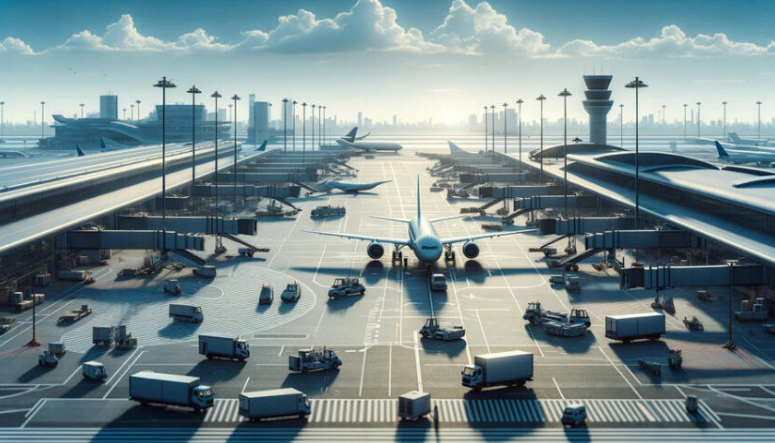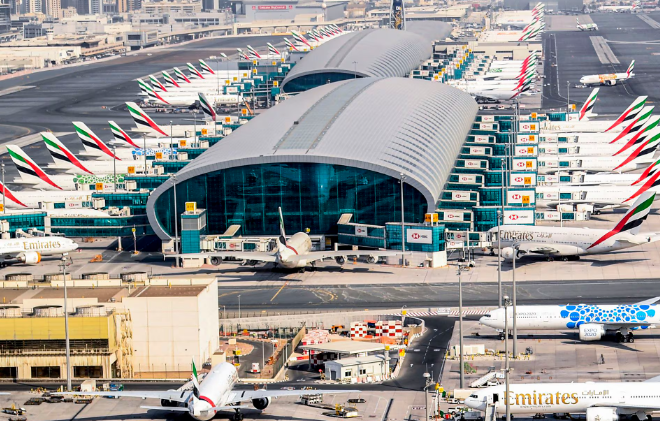UAE Airports Traffic: The UAE’s aviation sector is witnessing a robust recovery, with passenger traffic across the country’s airports surging by 14.2% in the first half of 2024. This significant growth reflects the strong resurgence of global travel and the UAE’s successful efforts to position itself as a premier travel hub.

A Strong Rebound in Passenger Numbers
Data from the General Civil Aviation Authority (GCAA) indicates that UAE airports handled over 62 million passengers between January and June 2024. This marks a substantial increase from the same period last year, as international travel continues to recover from the effects of the COVID-19 pandemic.
The rise in passenger numbers has been fueled by several factors, including the UAE’s world-class infrastructure, strategic location, and the return of major events and conferences in the region. Dubai International Airport (DXB), the world’s busiest airport for international passengers, played a significant role in this growth, handling more than half of the total passenger traffic.
UAE Airports Traffic: Key Drivers of Growth
The increase in passenger traffic can be attributed to several key drivers:
- Eased Travel Restrictions: With the lifting of travel restrictions in many countries, there has been a notable uptick in both inbound and outbound travel. The UAE’s proactive vaccination campaign and stringent health protocols have also played a critical role in restoring traveler confidence.
- Increased Connectivity: UAE airlines, including Emirates, Etihad Airways, and Flydubai, have expanded their networks and increased flight frequencies to meet rising demand. This has enhanced connectivity to key markets in Europe, Asia, and the Americas, contributing to the surge in passenger numbers.
- Tourism and Events: The return of major events, such as Expo City Dubai and the Dubai Shopping Festival, has attracted millions of visitors to the UAE. These events, coupled with the country’s year-round appeal as a tourist destination, have driven significant growth in international arrivals.
Economic Impact

The rise in passenger traffic is having a positive impact on the UAE’s economy. The aviation sector, which contributes significantly to the national GDP, is seeing increased revenues from both passenger services and cargo operations. The surge in traffic has also led to job creation within the sector and its associated industries, including hospitality, retail, and tourism.
Local businesses, particularly those in the hospitality and service sectors, are benefiting from the increased number of tourists and business travelers. Hotels in Dubai and Abu Dhabi have reported higher occupancy rates, while retail outlets at the airports are experiencing a boost in sales.
Challenges and Future Outlook

Despite the positive growth, the aviation sector still faces challenges. Rising fuel costs and ongoing geopolitical tensions could impact the profitability of airlines. However, industry experts remain optimistic about the future, forecasting continued growth in passenger numbers for the remainder of 2024.
To maintain this momentum, UAE airports are investing in infrastructure upgrades and technological innovations. The expansion of terminal facilities, enhanced security measures, and the adoption of smart technologies are all part of the strategy to accommodate future growth and improve the passenger experience.
UAE Airports Traffic: Preparing for the Future
As the aviation sector continues to rebound, the UAE is well-positioned to maintain its status as a global aviation hub. The anticipated increase in passenger traffic throughout the second half of 2024 will likely drive further economic growth and solidify the UAE’s role as a key player in the global travel industry.
Airports across the UAE are not only expanding their capacity but also enhancing their services to ensure that they can meet the needs of a growing number of passengers. With these efforts, the UAE aims to remain at the forefront of the global aviation industry.
References:
- General Civil Aviation Authority: www.gcaa.gov.ae
- Dubai International Airport: www.dubaiairports.ae
- Local News Sources: Khaleej Times, The National


